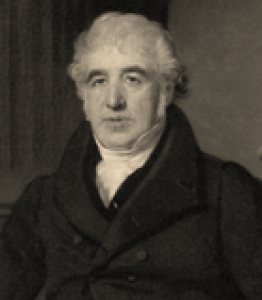History of Rubber: Development & Vulcanisation
This is Part Two of the History of Rubber series. Previously, Part One explores Discovery & Earliest Uses. The final installment covers the Rubber Economy 1870 – 1930.
Guides are available to download in PDF format at the bottom of the page.
Early Scientific Development Of Rubber
Charles De La Condamie Lays The Groundwork
Despite having been introduced to the Europeans from the 15th century, the practical and industrial applications of natural rubber were not forthcoming for some time. The first scientific paper on rubber was not written until 1751 by the French scientist Charles de la Condamine after he returned from his expedition in Peru. Over time many inventors and scientists began to experiment with rubber fabrics, rubber products and their applications.
Charles de la Condamine 1701 - 1774
Charles Macintosh And The 'Mac' Coat
While progress was slow at first, by the beginning of the 19th century the Scottish chemist Charles Macintosh had discovered a new method of waterproofing cotton. His rubberised outerwear, the Macintosh coat or “Mac” as it became known, was an international success and revolutionised fabric design. Later, Macintosh partnered with Thomas Hancock, who invented the machine known as a masticator, which shredded the waste rubber produced during fabrication. They joined forces and together founded a world-leading rubber company.
Despite this innovation and accomplishment, there still existed some major drawbacks to using natural rubber. The coated materials began to smell and rot; it became sticky in the sunshine and stiff in cold weather. Hancock and Macintosh had successfully used solvents to shape and mould rubber, but fundamental problems remained. Many began to doubt whether there was any commercial future for rubber at all.

Charles Macintosh 1766 - 1843
Thomas Hancock 1786 - 1865
Charles Goodyear Invents The Vulcanisation Process
Striking It Lucky
In the 1830s the rubber pioneer Charles Goodyear began his early experiments on natural rubber. Despite having no experience with chemistry, Goodyear was a persistent inventor whose ambition often came at the expense of his family and finances. After many failed attempts and a near-fatal exposure to hazardous gases, it is perhaps fitting that Goodyear discovered vulcanisation by accident. In 1839, Goodyear mixed rubber with sulphur and by chance dropped it onto a hot stove in his kitchen. While one part remained soft and another became charred, a thin strip in the middle was transformed into something hard, durable and most importantly, weatherproof.
This discovery transformed the commercial landscape for rubber and soon a second rubber boom was underway. Accelerated by the Industrial Revolution, vulcanised rubber quickly became necessary to seal steam cylinders, produce shoes and other rubber-based products. Amongst these industries, the emergence of the pneumatic tyre in the second half of the 19th century was pivotal in cementing rubber as a key commodity in an increasingly industrialised world.
As the chemistry, steam and heat processes of vulcanisation were perfected, the resultant material was continuously improved. Coupled with an insatiable demand, rubber became irresistibly profitable.
Charles Goodyear 1800 - 1860
The Rubber Boom Takes Hold
Many became exceedingly wealthy during this time. There is however, a fairly notable exception. Through a series of misfortunes and embroiled in patent disputes, Charles Goodyear never realised much profits from his revolutionary discovery and died a man of modest means. Nonetheless, the impact of his contribution was felt by his contemporaries. Decades after his death, a new company was founded in his name to honour his legacy and as such, the Goodyear name lives on.
If you enjoyed this article, visit Part One of the History of Rubber series to find out about the Discovery & Early Uses of natural rubber. Continue reading to learn more about The Rubber Economy 1870 – 1930.
This article is available to download as a PDF file: History of Rubber: Development & Vulcanisation.